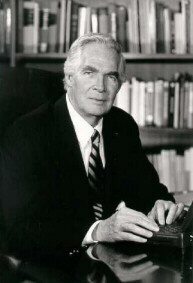


| Skip navigation | ||
 |
 |
 |
| |
||
 |
Greetings from the National Library of Medicine and MedlinePlus.gov Regards to all our listeners! I'm Rob Logan, Ph.D. senior staff National Library of Medicine substituting this week for Donald Lindberg, M.D, the Director of the U.S. National of Medicine. Here is what's new this week in MedlinePlus. |
|
Exercise drops significantly for American kids between age nine to 15, a comprehensive research study, recently published in the Journal of the American Medical Association, reveals for the first time. While the JAMA follow up study found kids at ages 9 and 11 often meet nationally recommended levels of an hour or more of moderate to vigorous physical activity daily, there is a sharp decline by age 15. Specifically, at ages 9 and 11 about 90 percent of more than 1000 children in a study exercised moderately to vigorously 60 minutes or more a day. However, by age 15 the percent of teens who exercised moderately to vigorously declined to 31 percent on weekdays, and dropped to 17 percent on Saturday and Sunday. The study estimates that exercise drops off dramatically among both boys and girls around age 13.The findings also were consistent for white and nonwhite participants. Children who grew up in a low income family and reside in the Midwest or South were especially prone to a sharp exercise decline. The study was based on data collected and supported by the Eunice Kennedy Shriver National Institute of Child Health and Human Development or NICHD. NICHD is a sister institution of the National Library of Medicine within the National Institutes of Health. The study followed a cohort of more than 1000 children from ten U.S. sites beginning at age nine -- for four to seven days. The kids in the study wore a small accelerometer on a belt, which records movement automatically. Follows ups occurred at ages 11, 12 and 15. The Centers for Disease Controls and Prevention defines moderate physical activity as walking briskly, dancing, swimming, or bicycling on level terrain. Vigorous exercise includes jogging, high impact aerobic dancing, swimming continuous laps, or bicycling uphill. I doubt any of us will dispute these distinctions (at any age!) While the research did not assess the reasons for the decline, the study's lead author, Philip Nader M.D., Professor Emeritus at the University of California San Diego, told several news organizations that he was surprised by the exercise drop off in teen years. The authors said and we quote: The JAMA study follows recent recommendations from the American Academy of Pediatrics to more aggressively screen and respond when obese or overweight children have high LDL or 'bad' cholesterol levels, plus a family history of diabetes and heart disease. While the American Academy of Pediatrics recommended diet and medications as primary treatments, the JAMA findings suggest encouraging more exercise also might be therapeutic for boys and girls especially starting around age 13. On their website, kids and exercise, the Nemours Foundation reminds us that an active child:
MedlinePlus.gov's 'exercise for children' health topic page adds regular exercise helps kids:
The Nemours Foundation page is the 'start here' section of MedlinePlus.gov's 'exercise for children' health topic page. The 'exercise for children' health topic page includes: other news stories about kids and exercise, nutrition information, clinical trials, some of the latest research findings, information written specifically to help children and teens, as well as tailored information to encourage safe sports participation by the following age groups -- 2-3, 4-5, 6-12, and 13-18. To find the 'exercise for children' health topic page, type 'exercise for children' in the search box on MedlinePlus.gov's home page. Then, click on 'exercise for children (National Library of Medicine).' As the JAMA study's authors note, there is an increasing urgency to advance better health for the nation's kids and now there is preliminary evidence this could be fostered by encouraging an hour of exercise daily for teens. MedlinePlus.gov provides a helpful resource for parents, school administrators, community organizations, and family members to introduce toddlers to safe exercise and stay active through their critical teen years. Before I go, this reminder……. MedlinePlus.gov is authoritative,….. free…. does not accept advertising …and is written to help you. To find MedlinePlus.gov, just type in "MedlinePlus.gov' in any web browser, such as Firefox, Safari, Netscape, or Explorer. We encourage you to use MedlinePlus and please recommend it to your friends. MedlinePlus is available in English and Spanish. Your comments about this or any of our podcasts are always welcome. We welcome suggestions about future topics too! A written transcript of recent podcasts is available. Just click on the 'Director's comments' link on MedlinePlus' home page. The National Library of Medicine is one of 27 institutes and centers within the National Institutes of Health. The National Institutes of Health is part of the U.S. Department of Health and Human Services. It was nice to be with you…. Dr. Lindberg returns in the near future. |
| Home | Health Topics | Drugs & Supplements | Encyclopedia | Dictionary | News | Directories | Other Resources | |
| Copyright | Privacy | Accessibility | Quality Guidelines U.S. National Library of Medicine, 8600 Rockville Pike, Bethesda, MD 20894 National Institutes of Health | Department of Health & Human Services |
Date last updated: 02 September 2008 |